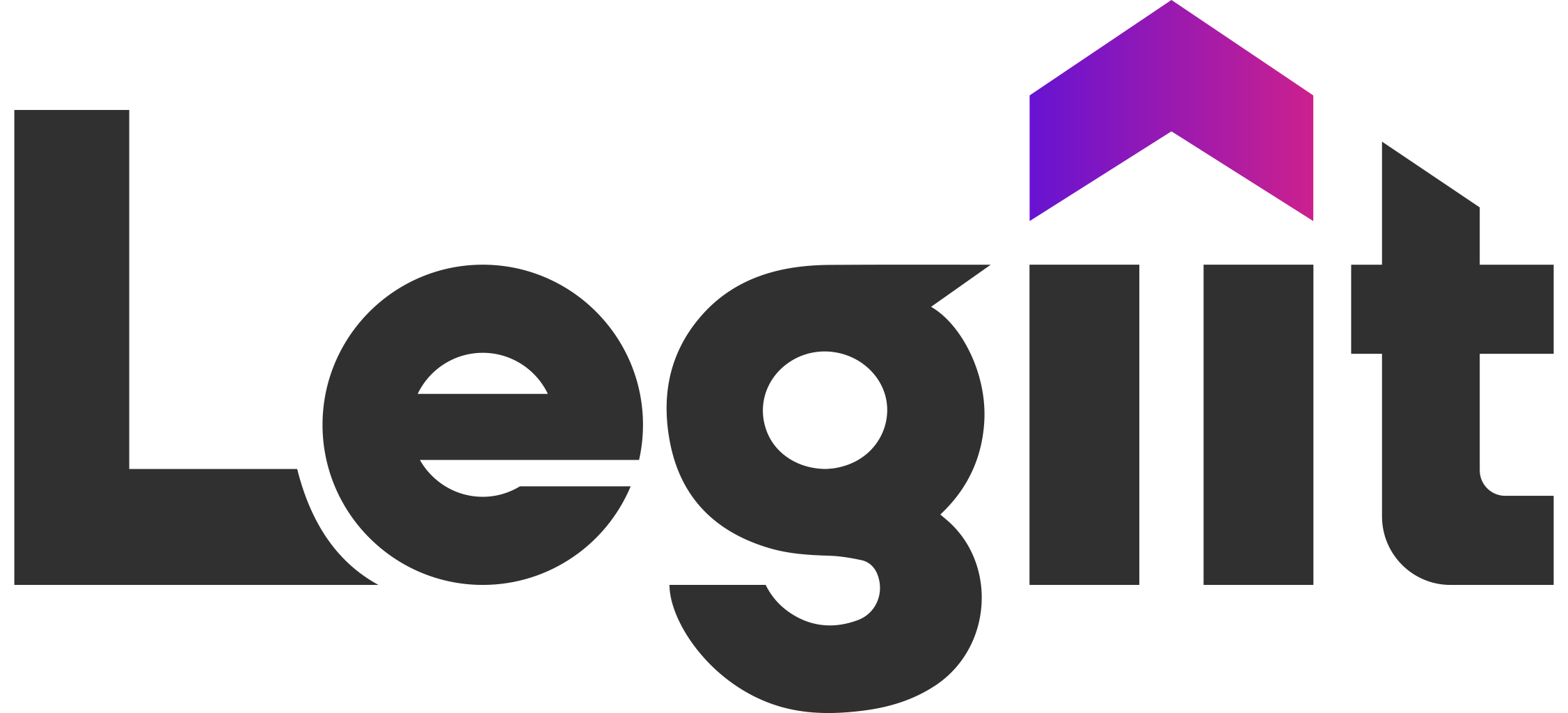Site structure is one of the key driving forces behind your SEO efforts. If you're focusing too much on other SEO activities without following the best practices for developing an organized website architecture we're about to discuss, forget higher rankings!
The organizational paradigm of your website's content is referred to as site structure. A website contains a variety of content on related topics, presented in the form of blogs, articles, video content, etc., on its pages.
The primary role of SEO site structure is to group, link, and showcase the website's content to the visitors and search engines in a manner that's easy to understand, navigate, and use.
If the SEO site structure is systematic and well-organized, it would be easier for the visitors to find what they're looking for and help Google index your URLs better. It helps search engines determine what content is important and relevant, greatly benefitting your site's SEO but more on that later.
In essence, site structure refers to how the information is showcased on your website, its overall design, and how well the pages are inter-connected for seamless navigation.
The website structure tools for your sites include breadcrumbs, internal links, tags, categories, and navigation.
Why Is Site Structure Important For SEO?

Even if you manage to generate or direct traffic to your website through content marketing, social media, and other means, the prospects would potentially never convert into customers.
Not only that, poor site structure means all the great content on the site would probably go unnoticed by visitors and search engines. Google will find it hard to find, index, or rank those pages for relevant search terms.
So, even if you're doing everything right but taking your SEO site structure for granted, get ready to pay a heavy price.
A good site structure keeps your visitors and search engines happy. It ensures higher rankings, increased revenue, more clicks, and a higher conversion rate.
Let's dig deeper into why a site's structure is important for SEO –
Enhance Your Website's Crawlability
Google crawls websites to discover and index content and web pages. The search engine bots accomplish this using the navigation structure to determine the page's importance and hierarchy across the site.This makes it important for your website's architecture to be easily accessible and navigation-friendly.
Improved User Experience (UX)
In a customer-centric market, it's important to ensure site visitors have a great experience on your website and can easily find what they're looking for.You want to create a website that's easy to navigate and offer your customers/visitors a seamless experience.
According to a report, 88 percent of online consumers are not likely to return to a website after a bad experience.
Boosts Your Website's SEO
Over 25 percent of global SEO professionals believe structured data is one of the most important SEO factors. It can make or break your chances of ranking in the search engines.The SEO site structure plays a major role in how easily Google bots crawl your website and how soon your website's URLs are indexed. If your web pages aren't indexed, what good will SEO do?
Structured data helps search engines recognize you're making sense, paving the way for higher search engine rankings.
Streamlining Site's Hierarchy by Prioritizing Web Pages
The URLs of your website are visible in the SERPs and can play a vital role in boosting click-through rates. Having a clean URL structure is crucial for search engine crawlers and users.It's important to prioritize and use consistent URLs to form an integrated site structure that clearly reflects the site's hierarchy. Having short and descriptive URLs with targeted keywords placed in the front helps with SEO and showcases a clear hierarchy.
For example, an eCommerce website selling clothing gear for only four sports, namely Soccer, Cricket, Rugby, and Basketball, should ideally have the following URL template –
- www.exampleshoppingwebsite.com/soccer/
- www.exampleshoppingwebsite.com/cricket/
- www.exampleshoppingwebsite.com/rugby/
- www.exampleshoppingwebsite.com/basketball/
Inner pages for this website should look like - www.exampleshoppingwebsite.com/soccer/shoes and not www.exampleshoppingwebsite.com/soccer-shoes/
The website's architecture with clear URL structure and folders for various inner pages helps the search engines and the users identify what is on the other side. For example, browse through Nike or Ray Ban’s websites and check out their URLs, to get an idea
Clear SEO site structure helps users to jump from one section of the website to the other without getting lost midway.
Reduce Your Bounce Rate
Bounce rate signifies the engagement level of users with your website. Having a high bounce rate can be a nightmare for an SEO professional, and it just might indicate an issue with the SEO site structure.It means a user visited your site and couldn't find what they were looking for. While many reasons can influence bounce rate, there's often a correlation between poor site structure and higher bounce rates.
This makes it an important SEO metric you cannot miss monitoring.
Prevent Keyword Cannibalization
Well-mapped-out website architecture can help prevent keyword cannibalization.If your website has many pages with content on similar or related topics, a good SEO site structure would help organize and distinguish these pages for users and search engines to identify the intention behind each content piece.
This will ensure your web pages don't end up competing against each other, adding roadblocks to your SEO strategy.
Boosting Conversion Rate
A user visits your website for a reason, which can be either purely transactional or for information, quote, etc.A website that's easy to navigate supports the conversion funnel by reducing the steps between visitors landing on the site to finding what they're looking for.
In other words, it's essential to organize your SEO site structure to enable conversion in just a click or two (ideally four clicks), even if your website has a million pages.
Highlighting Important Content
The right site structure would make it easier for you to highlight what is often termed in the SEO world as hub or pillar pages.It makes it easier for the search engines to identify pages based on importance and relevancy, translating into higher rankings for competitive keywords.
What Happens If You Have A Messy Site Structure?

When you have a messy site structure, it weakens the very purpose of having a website in the first place.
It negatively influences your search engine rankings, which means your website won't enjoy the visibility it needs to reach its target audience.
A site with poor architecture will most likely offer a poor user experience, translating into bad publicity and little to no conversions.
Let's look into this from three different perspectives -
For Google
Google understands your website through the SEO site structure. If the structured data on your site is poorly managed, Google will have a hard time crawling it, indexing it, and ranking it.If the site structure is unorganized, Google won't be able to identify or have a hard time recognizing and indexing important content or pages.
Also, it won't be able to identify the relationship shared between various pages on your website, making it even harder for web pages to rank for the targeted keywords.
For Users
To grab users' attention online, it's important to deliver a great experience. And it starts with having a linear and organized SEO site structure.If the website's architecture is disoriented, it kills the user experience and your dreams of enjoying higher sales, creating brand awareness, achieving higher rankings, and triggering word-of-mouth marketing.
Because let's be honest, no one will refer their friends and family to a website they've had a bad experience with.
The right SEO site structure would ensure the website is easy to navigate, and the users can easily find what they came looking for.
For You
With time, your website grows, and it is bound to get cluttered as you add new products, content, categories, and more.It needs to be neatly organized to ensure the structured data on your website is easily readable by Google and navigable by users.
A good SEO site structure ensures you can easily locate outdated or sold-out products for removal, redundant content to delete/de-index, and pull the plug off categories that are no longer relevant.
It allows you to review and improve internal linking architecture, helping your website's SEO tremendously.
How To Plan and Build a Good Site Structure?

Remove Unnecessary Content
No matter the industry, the content, and the offerings would change with time. This makes it essential to get rid of old and outdated content/products/offerings from your website to improve the site's relevancy and overall user experience it offers.Think of this as detoxifying your website as you don't want visitors to land on a content piece that's no longer relevant or a product that's no longer sold.
It creates user intent misalignment, triggering a chain of negative effects on your branding, SEO, and marketing efforts.
The old URLs should be redirected to the newly launched products or latest content, ensuring the visitors don't land on a discrediting 404 page.
Review Your Categories
One of the first things to do when optimizing website content is to delegate site categories distinctly. It gives crawlers and users perfectly mapped out structured data to sort through the site's information and quickly retrieve relevant information.One thing to remember here is that the categories should be delegated in a balanced manner, ensuring all the categories are of around the same size.
If any of the categories outgrows other categories, you should create subcategories or more categories to accommodate the data in a precise format.
It is important because ranking websites with huge or imbalanced categories is challenging. Keep all the categories well-fed in terms of content to optimize it evenly.
Plan an Internal Linking Map For Your Pages
One of the integral aspects of planning and optimizing SEO site structure is internal linking. Internal links direct users and search engine crawlers from one page of your website to the other.It allows Google bots to understand your website's architecture and the topical relevancy between the pages.
Internal linking is crucial to help users navigate the website seamlessly while passing the essential link authority needed for SEO purposes.
Internal links can be developed through –
- Navigation Links
- Breadcrumbs
- Contextual Internal Links
In SEO, content plays a key role in creating brand awareness and authority, achieving higher SERPs, and gaining traffic. For this reason, the topic clustering strategy is used to create content on related topics, eventually encompassing the entire topic.
Internal linking is the key to unveiling the power of the topic clustering strategy, getting you in the good books of Google while allowing visitors to navigate through the pages easily.
Several tools help overview your website's existing internal linking structure. It shows you the gaps you need to fill and the pages that need internal links to optimize the internal linking structure perfectly.
Ideally, the internal linking rule is to ensure every page on your website points to another page while ensuring you link to important pages more than the less important ones.
Stay Topically Relevant
If there's something as important as website architecture, it's content. It can't be pressed enough how important it is to create and publish content that aligns with what your target audience is looking for.To ensure the web pages are optimized, keyword research is a must. Keyword research is a critical element in topical SEO, which paves the way for developing an SEO site structure that's interconnected and interlinked.
Grouping various content pieces on your website improves users' experience and allows search engines to recognize you as an authority in your niche.
Topic clustering is all about covering a topic in-depth and showcasing topical authority by grouping relevant and related content. It paves the way for higher rankings, site authority, and organic search traffic.
In other words, don't create random content but focus on creating topically relevant content that opens interlinking opportunities and keeps the SEO site structure well-optimized.
Plan Your Keywords & Content Ideas Ahead
This relates to the above point because staying topically relevant begins with topical keyword research and content planning.For a well-mapped-out SEO site structure, it's essential to define the topics you want to target and the focus keywords you want to rank for.
You can use various keyword and topic research tools to get ideas about the relevant topics in your niche and develop a grouping strategy for your keywords and content.
It's crucial to review what your competitors are doing regarding keywords they're focusing on, how they're grouping their content, and conduct market research.
It's also important to define your target audience and understand their expectations, the answers they're looking for, and the websites they're visiting.
This will help you have a more focused and strategic approach to keyword/content planning, paving the way for an optimized and effective SEO site structure.
Create The Navigation With The User In Mind
Navigation across your website should be designed keeping your users in mind. Irrespective of how small or huge your website may be, the users should be able to find what came looking for in as few clicks as possible.Keep it simple and ensure the click-depth or the navigation-depth of your website doesn't exceed four clicks. While there's no rule carved in stone around this, keeping the click-depth minimum helps improve users' experience.
Just focus on users' convenience when mapping your website and integrating navigation elements, and you'll be fine. And, don't forget to consider navigation across different devices, including mobile and tablets.
On similar lines, good website structure examples include Netflix, Ikea, Kiwi.com, Best Buy, Apple, and many more, the list is practically endless. These websites are classic examples of impressive UI/UX interacting perfectly with Google.
Create an HTML Sitemap
Generating an HTML Sitemap or a structure of your website in HTML is the key component of developing a robust SEO site structure.The sitemaps allow Google to get a list of URLs they can crawl, ensuring no pages are missed. It greatly reduces the risk of having an orphan page.
The HTML sitemaps are also visible to users and are critical for distributing link authority across the website, which is essential for SEO.
Establish Your Website's Hierarchy
Once you've baked the cake, you can't go back and add sugar if you missed adding it when forming the batter.Similarly, you must create a visual map of your site's hierarchy or a site structure diagram to define the relationship between pages. Without a visual map and content strategy in place, your site structure would be a mess that would be too challenging to fix later.
So, once you're done with the keyword research, it's important to define topic clusters, determine pillage pages for various clusters, and expand further through supporting content.
Categorization can be greatly helpful in this regard as you assign keywords for each category, specify page type, and create hierarchies in the form of subcategories, subpages, filters, etc.
Creating a visual map using Gloomaps can be greatly beneficial as it would help you understand how topic clusters are aligned and how to categorize posts and pages.
Run User Testing
Running a high-performance, user-friendly website is an ongoing process.So, once your website is live, it's essential to run tests frequently to unveil any underlying issues with your current site structure setup. This will help highlight areas that need changes and warrant your revisit.
Some of the key questions user testing helps answer are –
- Where are the obstacles in the user's journey?
- Which navigation or site's elements are not user-friendly?
- How to improve or smoothen the sales funnel/customers' journey?
- Where are the bottlenecks in the current site structure?
The trick is to keep testing and optimizing your website as it grows and users' feedback keeps pouring in.
FAQs – SEO Site Structure

How should I plan my website structure for SEO?
The website structure should be planned with users in mind while ensuring it's easy to crawl for Google bots, optimized for keywords, and search-engine friendly.SEO site structure must have a sitemap, linear hierarchy, a clear URL structure, organized and balanced categories, and simple navigation.
What are 4 different types of site structure?
There are four types of site structure, namely –- Hierarchical Model
- Sequential Model (Also known as Linear Model)
- Matrix Model (Also known as webbed or network Model)
- Database Model.
What is a good structure for a website?
In terms of SEO, the hierarchical type of website structure is best for a website. It's a logical and modern SEO site structure that's both user-friendly and search engine friendly.What is a site structure diagram?
A site structure diagram is a visual map of a website's layout, representing the site's navigation, purpose, content placement, and overall organization.A site structure diagram helps define the website's architecture, test different website layouts, and navigation paths, and restructure the existing layout. You can use Gloomaps to get a site structure diagram for your website.
Who is qualified to design your site's structure?
SEO site structure is designed and developed by a website developer.In some phases of website development, inputs from or collaboration with UX/UI designers can help create a more cohesive, organized, and user-friendly site structure.
SEO Site Structure – Final Thoughts
SEO site structure is the spine of your website, directly impacting its SEO and UX. It is essential to rank higher in the search engine, drive organic traffic, and achieve success online.Carefully planning and organizing your SEO site structure can go a long way in priming your website for higher SERPs and success in your niche.
It's important to do a website structure analysis of your competitors, conduct in-depth keyword research, and group web pages based on hierarchical categories. Similarly, pay attention to the website's URL structure, interlinking network, and navigational elements.
Building a website structure is not only about links, sections, and categories but also about a smooth user experience and an impressive design. Maintaining a great website structure is totally under your control and must be a part of your core SEO strategy.
With a neatly planned site structure, your website leaves Google and users impressed, setting you up for success.












 Download
Download